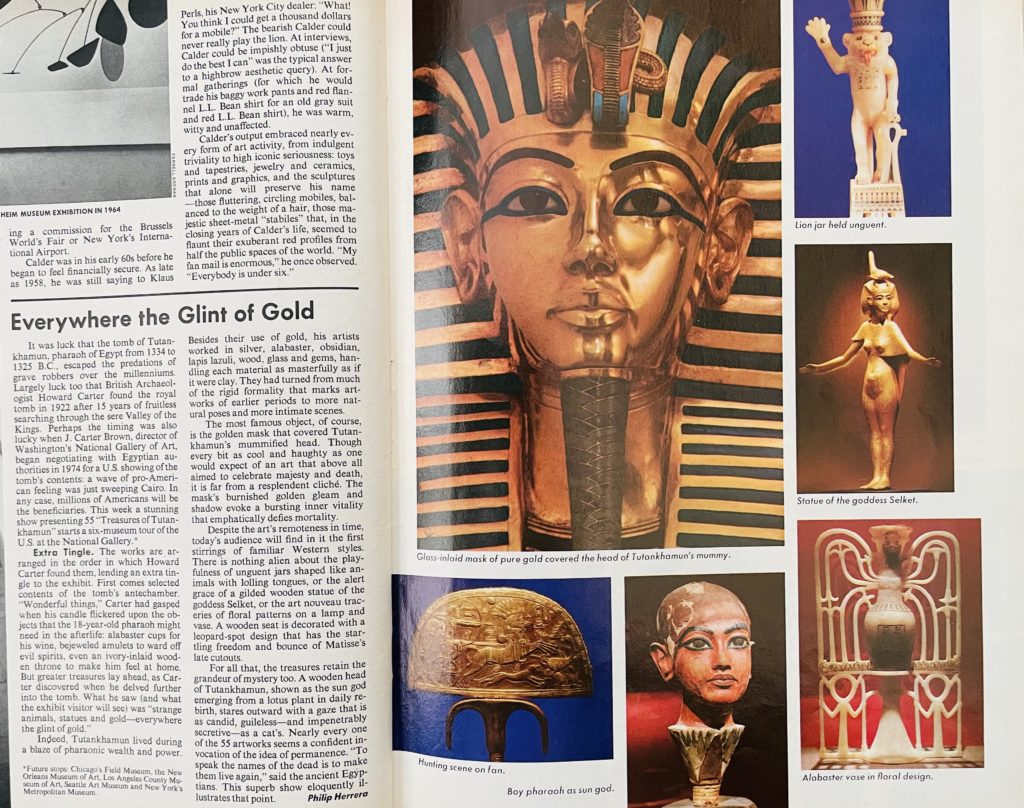Whisky is not the vice John DeLorean is usually associated with. Cutty Sark ad from 1981, the first year the DeLorean sports car was sold. In 1982, John DeLorean was arrested for (and later acquitted of) drug trafficking. The DeLorean Motor Company declared bankruptcy the same year. Cutty Sark Scotch whisky was created in 1923 and is still in business.
Category: History
Time Flashback: November 1976
New York Bricks Go Boutique
Here’s a brief history of the New York brickmaking industry from the New York Times. New York did not have a monopoly on bricks; excellent clay deposits run through New Jersey and into Pennsylvania as well. The Sayre & Fisher Brick Company, in the town now known as Sayreville, New Jersey, was for a time the largest brickmaker in the world and in 1903, Pennsylvania was the largest brick producer in the nation.

But the Hudson Valley was also lined with dozens of brickyards, and since it’s the Hudson Valley, it should be no surprise that now one of them, the Hutton Brickyards, has been turned into a boutique hotel that preserves some of its history. Their “Genuine Experiences” do sound genuinely fun:
Our sprawling campus features whimsical invitations to fun: an archery range, croquet lawn, firepits and bicycles. Experience hikes, guided kayak experiences, paddle-boarding, running, outdoor yoga, snow shoeing, cross country skiing, bee-keeping and more!
huttonbrickyards.com

Featured image: Hutton Brickworks in 2016, by Corey Seamer via Flickr, CC BY-NC 2.0.
1965 Pontiac Safari Station Wagon
Street Van: One of Dodge’s 1970s Adult Toys
During the heyday for customized and airbrushed vans, Dodge capitalized on the trend by offering hip options straight from the factory. While the custom van craze faded by the early eighties, the Dodge B-Series cargo van soldiered on until 2003, when it was replaced with the Sprinter van sourced from Mercedes.
The Street Van, offered from 1976 through 1980, was advertised as an “Adult Toy,” alongside other full-size Dodge offerings like the Ramcharger SUV and Lil’ Red Express pickup. It featured factory options such as chrome, chrome and more chrome, wide five-slot mag wheels, custom interiors and wild graphics packages, plus the psychedelic “Street Van” logo on the passenger and driver side doors. Even better, Street Van buyers got a “Customizing Idea Kit,” which included suggestions for paint schemes and interior choices, as well as a listing of aftermarket suppliers that could outfit your boss rig with spoilers, fender flares, sunroofs, vents and, of course, portholes of nearly every shape under the sun. By 1977, membership in the “Dodge Van Clan Club” was also included.
Tara Hurlin, https://www.hagerty.com/media/archived/shag-wagons/

The seller notes that all of the carpeting was recently professionally cleaned, which is likely one of the biggest concerns/fears of anyone looking to get into a van of this style and vintage.
Jeff Lavary, barnfinds.com
Updike Farmstead in Winter
It’s cold out and there’s been snow on the ground for two weeks so it was a short visit to the Updike Farmstead, part of the Princeton Battlefield/Stony Brook Settlement Historic District and headquarters of the Princeton Historical Society.



Time equals Truth: Robert Caro’s Archives
Author Robert Caro’s personal archives will go to the New York Historical Society. Caro is still writing the final volume of his Lyndon B. Johnson biography.

Wild and Historic New Jersey: Prints and Paintings

Fantastic historic prints and maps of New Jersey can be see in an online exhibition by the Morven Museum. Like the images above, a view of the Delaware Water Gap by an unknown artist, and an engraving of Bordentown Landing by Karl Bodmer, because of course he and Prince Maximillian stopped by to visit Joseph Bonaparte’s estate before heading west.
The original exhibition, Portrait of Place: Paintings, Drawings, and Prints of New Jersey, 1761–1898, was held at Morven in 2013 and was drawn from the collection of Joseph Felcone.

Visiting the Historic Site of Woodstock and the Bindy Bazaar

As the plaque above clearly shows, the 1969 Woodstock Concert is legitimately a site of historical importance. While the rule of thumb is that only sites at least 50 years old are considered for listing on the National Register of Historical Places, Woodstock was placed on the Register in 2017, only 48 years after the three day festival of music took place on Max Yasgur’s farm near Bethel, New York.
The Bethel Woods Center for the Arts and the Museum at Bethel Woods maintain the Woodstock site with the goal of preserving the historic landscape. The actual stage and seating area are now open grassed areas. Across the road there is a small wooded area known as Bindy Woods or Bindy Bazaar. In 1969, trails were cut through the woods and rocks were gathered and stacked to create simple foundations where vendors at the “Aquarian Crafts Bazaar” could set up makeshift stalls to sell goods to the concert goers.
Historic Maps of Tyrone and other Towns around Lamoka
A while ago, I posted about the New York Public Library’s Map Warper project, which is making thousands of historic maps easily available. Well, the Map Warper project is still going strong, and here’s another map from their collection, which shows three small towns around Lamoka Lake. Taken from the 1874 Atlas of Schuyler County, the map also lists many of the farmers and other businessmen in the area.

You can also see what Wayne, at the top of Waneta Lake (which was still called Little Lake in 1874) looked like in the 19th century at the NYPL.




















